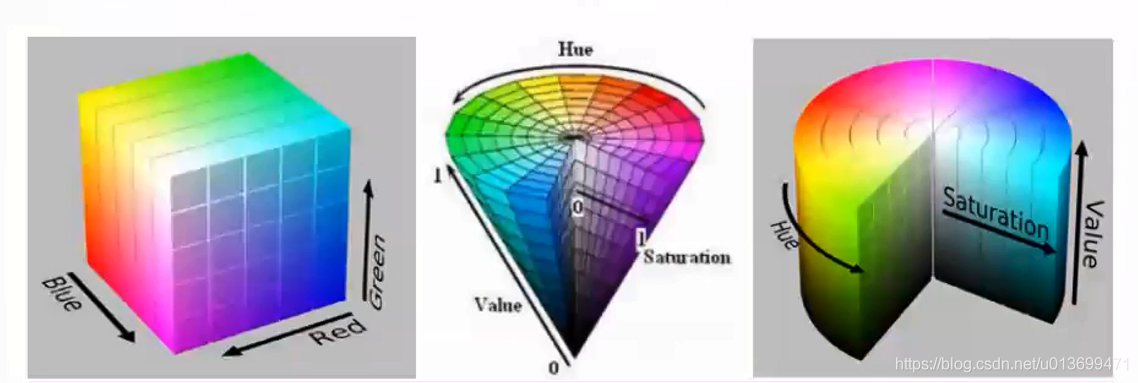OpenCV图像处理:USB摄像头图像跟踪与运动分析,捕捉动态,深入理解图像
发布时间: 2024-08-13 01:51:53 阅读量: 18 订阅数: 46 


# 1. OpenCV图像处理基础**
OpenCV(Open Source Computer Vision Library)是一个开源计算机视觉库,它提供了丰富的图像处理和计算机视觉算法。OpenCV图像处理的基础知识包括:
- **图像表示:**图像由像素数组表示,每个像素具有颜色值和位置信息。
- **图像类型:**OpenCV支持各种图像类型,包括灰度图像、彩色图像和多通道图像。
- **图像操作:**OpenCV提供了一系列图像操作函数,包括图像转换、图像增强、图像几何变换和图像分析。
# 2. USB摄像头图像采集与预处理
### 2.1 USB摄像头图像采集
**USB摄像头图像采集流程:**
1. **初始化摄像头:**使用 OpenCV 的 `VideoCapture` 类创建摄像头对象,并指定摄像头索引或设备路径。
2. **打开摄像头:**调用 `VideoCapture` 对象的 `open()` 方法打开摄像头。
3. **读取帧:**使用 `read()` 方法从摄像头读取帧。帧是一个包含图像数据的 NumPy 数组。
4. **处理帧:**对帧进行预处理(例如转换、增强)或直接显示。
5. **释放摄像头:**读取完所有帧后,释放摄像头以释放系统资源。
**代码示例:**
```python
import cv2
# 初始化摄像头
cap = cv2.VideoCapture(0)
# 打开摄像头
if cap.isOpened():
while True:
# 读取帧
ret, frame = cap.read()
# 处理帧
# ...
# 显示帧
cv2.imshow('Frame', frame)
# 按 'q' 退出
if cv2.waitKey(1) & 0xFF == ord('q'):
break
else:
print("Error opening camera")
# 释放摄像头
cap.release()
cv2.destroyAllWindows()
```
### 2.2 图像预处理
图像预处理是图像处理中至关重要的一步,它可以提高后续处理的效率和准确性。
#### 2.2.1 图像转换
**图像转换类型:**
- **色彩空间转换:**将图像从一种色彩空间(如 BGR)转换为另一种色彩空间(如 HSV)。
- **尺寸调整:**调整图像的分辨率或缩放因子。
- **数据类型转换:**将图像数据类型从一种(如 uint8)转换为另一种(如 float32)。
**代码示例:**
```python
# 将图像从 BGR 转换为 HSV
hsv = cv2.cvtColor(frame, cv2.COLOR_BGR2HSV)
# 调整图像尺寸
resized = cv2.resize(frame, (640, 480))
# 将图像数据类型从 uint8 转换为 float32
frame_float = frame.astype(np.float32)
```
#### 2.2.2 图像增强
**图像增强技术:**
- **直方图均衡化:**调整图像的直方图,使图像的对比度和亮度更均匀。
- **锐化:**增强图像的边缘和细节。
- **平滑:**去除图像中的噪声和杂点。
**代码示例:**
```python
# 直方图均衡化
equ = cv2.equalizeHist(frame)
# 锐化
kernel = np.array([[0, -1, 0], [-1, 5, -1], [0, -1, 0]])
sharpened = cv2.filter2D(frame, -1, kernel)
# 平滑
blurred = cv2.GaussianBlur(frame, (5, 5), 0)
```
# 3. 图像跟踪与运动分析
### 3.1 目标跟踪
目标跟踪是计算机视觉中一项重要的任务,其目的是在连续的视频帧中定位和跟踪感兴趣的目标。OpenCV提供了多种目标跟踪算法,其中包括相关滤波和卡尔曼滤波。
#### 3.1.1 相关滤波
相关滤波是一种在线学习算法,用于跟踪目标的运动。它通过学习目标的外观模型来预测目标在下一帧中的位置。相关滤波的优点在于其计算效率高,并且能够处理目标的形变和遮挡。
**代码块:**
```python
import cv2
# 初始化相关滤波器
tracker = cv2.TrackerCSRT_create()
# 读取视频
cap = cv2.VideoCapture('video.mp4')
# 获取第一帧并初始化目标框
ret, frame = cap.read()
bbox = cv2.selectROI('Select Target', frame)
# 初始化相关滤波器
tracker.init(frame, bbox)
# 循环处理视频帧
while True:
ret, frame = cap.read()
if not ret:
break
# 更新相关滤波器
success, bbox = tracker.update(frame)
# 绘制目标框
if success:
(x, y, w, h) = [int(v) for v in bbox]
cv2.rectangle(frame, (x, y), (x + w, y + h), (0, 255, 0), 2)
# 显示帧
cv2.imshow('Frame', frame)
cv2.waitKey(1)
```
**逻辑分析:**
* `cv2.TrackerCSRT_create()`:创建相关滤波器对象。
* `cv2.selectROI()`:从第一帧中选择目标框。
* `tracker.init()`:使用目标框初始化相关滤波器。
* `tracker.update()`:更新相关滤波器并返回更新后的目标框。
* `cv2.rectangle()`:在帧上绘制目标框。
#### 3.1.2 卡尔曼滤波
卡尔曼滤波是一种递归滤波算法,用于估计目标的状态(位置、速度等)。它通过使用状态转移模型和测量模型来预测目标在下一帧中的状态。卡尔曼滤波的优点在于其能够处理目标的非线性运动和噪声。
**代码块:**
```python
import cv2
# 初始化卡尔曼滤波器
kalman = cv2.KalmanFilter(4, 2, 0)
# 设置状态转移模型
kalman.transitionMatrix = np.array([[1, 0, 1, 0],
[0, 1, 0, 1],
[0, 0, 1, 0],
```
0
0





